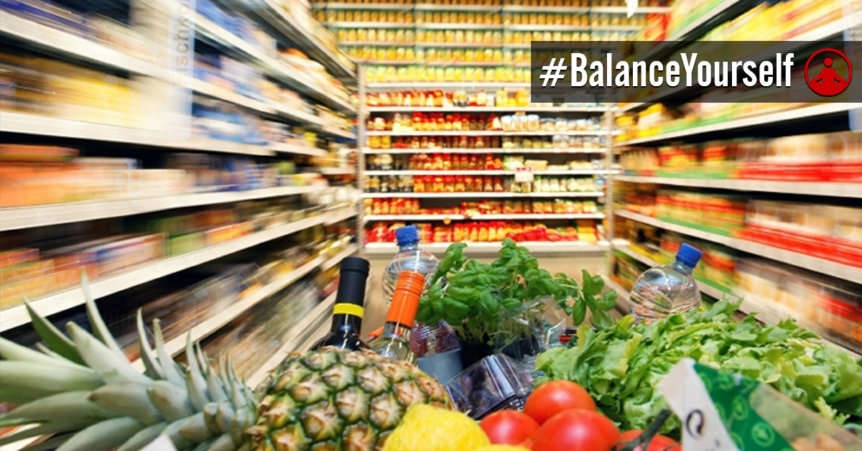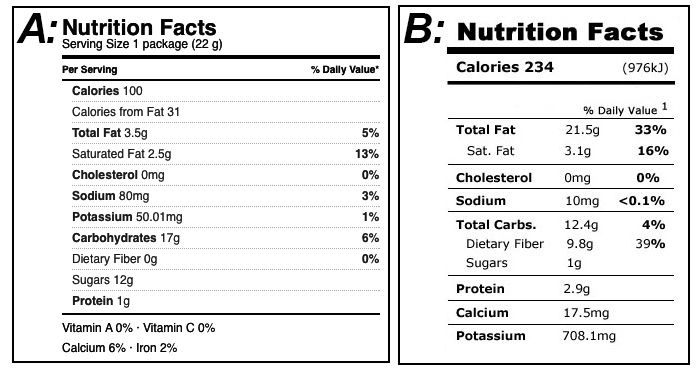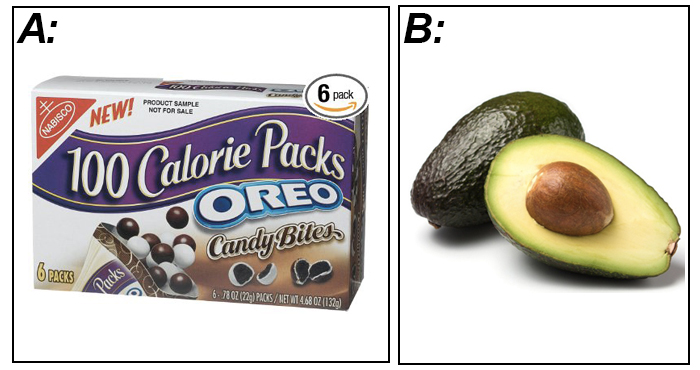Grocery shopping is a part of life. It’s an errand…a “chore.” We do it out of necessity, and for the most part we stick to the same routines and buy the same staple foods week after week. But how many of us actually understand what our “food” is made of, and more importantly, how those ingredients affect our health? This is something I struggled with for years…until I discovered “Rich Food, Poor Food,” a veritable encyclopedia of knowledge about how to shop for real food, the right way.
*Note: I have not been asked to endorse this book nor have I had any contact with the authors. I am purely sharing this as a valuable resource for others.
COST VS. VALUE
Some of us eat to live, and some of us live to eat. I’m in the former category, but that hasn’t always been the case. My primary goal when food shopping is to buy the best fuel I can for my body to perform at an optimal level (p.s. I’ll usually include a couple treats as well), and cost is a factor fairly low on my priority list. I don’t buy the cheapest options anymore, I buy the best value. Just a few years ago, my goal when food shopping was to get the cheapest option possible and make sure everything tasted great (See this podcast episode for more about “mindful eating”). I would read labels, but I mostly paid attention to the front of the box (the “billboard”) and the total number of calories.
Knowing my food is “all natural,” or “high in fiber” and “low in calories” is all that matters for optimal health, right?
TEST YOUR KNOWLEDGE
Take a look at these two nutrition labels and choose the healthier option.
*Note: Both are roughly the same serving size and would fit in the palm of your hand.
There’s no question that option ‘A’ is the healthier choice, yes? It clearly has less calories, and the fat content is much lower as well. It contains more sugar and sodium, but the important thing is it’s low in fat and calories.
Now let’s list the ingredients:
Option A: White Confectionery Coating (Sugar, Palm Kernel and/or Palm Oil, Skim Milk, Milk, Soy Lecithin -An Emulsifier, Artificial Color, Artificial Flavor), Chocolate Cookie [Enriched Flour (Wheat Flour, Niacin, Reduced Iron, Thiamine Mononitrate [Vitamin B1], Riboflavin [Vitamin B2], Folic Acid), Sugar, Cocoa, Whole Wheat Flour, Partially Hydrogenated Soybean Oil, Glycerin, Corn Flour, Baking Soda, Calcium Sulfate, Salt, Soy Lecithin (Emulsifier), Artificial Flavor), Sugar, Artificial Color (Includes Red 40 Lake, Yellow 5 Lake, Yellow Slake, Blue 2 Lake), Gum Arabic, Confectioners Glaze (Carnauba Wax, Beeswax, Shellac), Cornstarch, Corn Syrup. Contains: Milk, Soy, Wheat.
Option B: See below…
[spoiler] [/spoiler]
If all you did was count calories and grams of fat, you’d be eating Oreo Candy Bites to reach your dietary goals instead of an avocado (one of the healthiest foods on the planet). So where do we go from here? That’s where “Rich Food, Poor Food” enters the picture.
WHERE DO I START?
“Rich Food, Poor Food” is like carrying the Wikipedia of food in your shopping cart. It is broken down aisle by aisle to help you understand how each and every food item category is produced and what you should look out for. They offer “Rich” food options and “Poor” food options, but more importantly, the book offers education about the multitude of chemicals and ingredients in food you probably know nothing about. Did you know nuts have high amounts of phytic acid? Do you know why xanthan gum is in your almond milk? Do you know the difference between “all natural” and “100% organic?” I’ll never shop the same way again, and I’m so thankful this resource exists.
A FEW BULLET POINTS
To break down all the valuable information this book contains would require about 272 pages (coincidentally the EXACT number of pages in the book), but here are some of my favorite nuggets I feel everyone should know before the next time they buy and consume food:
- Be VERY cautious of artificial sweeteners. The bad boys include: Sucralose, Acesulfame Potassium, Aspartame, Neotame, Saccharrin.
- Stay away from artificial colors (Did you know most of these are BANNED in other countries?): Citrus Red 2, Blue #1 & #2, Red #3 & #40, Yellow #5 & #6.
- Did you know that over 80% of packaged processed foods contain GMO’s (Genetically Modified Organisms)? Here is why you should care.
- Products labeled as “Natural” can be produced using hormones, pesticides, antibiotics, chemical fertilizers, genetic engineering, and even sewage sludge!!!
- Grass-fed butter has up to 50% more Vitamin A, Vitamin E, and nearly 400% more beta-carotene that butter produced from factory-farmed cows.
- Farmed salmon contains 16 times (!!!!) more of the cancer-linked toxin PCB than wild salmon.
- Contrary to the concept of the “Dirty Dozen,” there are actually 20 different kinds of vegetables and produce you should only buy organically (dubbed the “Terrible Twenty”).
- Residents of the USA and other Western nations following a grain-based diet are now the fattest population in the history of the Earth.
- Foods made with wheat flour raise your blood sugar higher than almost any other food, even a candy bar!
- Most importantly…and why this book is such an invaluable resource…micronutrient deficiency is the most widespread and dangerous health condition of the 21st century.
Additional Resources:
- Calton Nutrition
- “Rich Food” Resource Center
- Ep09: Everything You Need to Know About Food Shopping, Nutrition, and More | with Mira and Jayson Calton
- Bulletproof Podcast #37 – Rich Food, Poor Food
- Mark’s Daily Apple – Rich Food, Poor Food
What strategies do you use to buy the right foods when you go grocery shopping?




